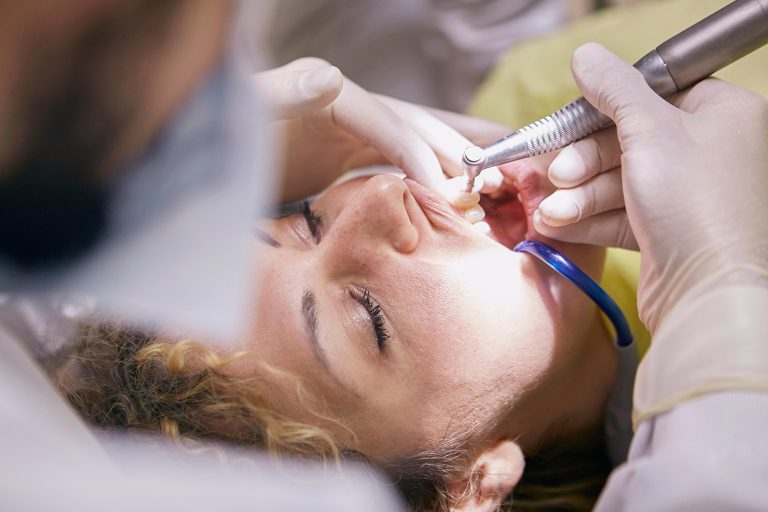Dentistry, much like any line of medical practise, has its array of intricate procedures and technologies that the layperson may not be familiar with.
One such procedure that has proven to be not only fascinating but also crucial for many dental interventions is bone grafting. In this comprehensive guide, we will take a deep dive into the different types of bone grafts in dentistry.
We’ll discuss each and provide you with a map into this vital aspect of oral health and restorative dentistry. So, take some time and read on!
Autografts
Autografts are bone grafts that are harvested from the patient’s body. This is often considered the “gold standard” in bone grafting. This is because it provides the best chance for successful integration with the patient’s existing bone tissue.
There are two main types of autografts used in dentistry:
Block autografts
Block autografts involve taking a section of bone from one part of the body. This part will be placed in the area where new bone is needed. This type of graft is often used in larger areas where more bone volume is required, such as for jaw reconstruction.
Particulate autografts
Particulate autografts involve harvesting small pieces or fragments of bone from one part of the body and placing them in the area where new bone is needed. This type of graft is often used in smaller areas, such as for dental implant procedures.
Most dentists for dental implants can tell you that the success rate of these procedures is significantly higher when using autografts compared to other types of bone grafts.
Allografts
Allografts are bone grafts that are taken from another human donor. The donor is typically a deceased individual. These grafts undergo extensive processing and sterilisation. This helps ensure safety and compatibility with the patient’s body.
Allografts are often used as an alternative to autografts. This is especially true in cases where there is not enough bone available for harvesting from the patient’s body. This type of graft is also commonly used in sinus lift procedures.
Xenografts
Xenografts are bone grafts that are taken from a different species, usually bovine or porcine sources. Similar to allografts, xenografts also undergo processing and sterilisation before being used in dental procedures.
Xenografts are commonly used in cases where there is not enough bone available from the patient’s body or human donors. They are also less expensive compared to autografts and allografts.
Alloplastic Grafts
Alloplastic grafts are bone grafts that are made from synthetic bone or materials. This includes hydroxyapatite or calcium phosphate. These types of grafts do not involve harvesting bone tissue from the patient’s body or using tissue from other donors.
Alloplastic grafts are often used in dental procedures where minimal bone volume is needed, such as for socket preservation after tooth extraction. They are also known to have a high success rate and do not carry the risk of disease transmission like allografts or xenografts.
Composite grafts
Composite grafts combine different types of bone graft materials to achieve the desired outcome. For example, a composite graft may include elements of:
- autograft
- allograft
- alloplastic materials
All these can provide both structural support and stimulate new bone growth. This type of graft is often used in more complex cases where multiple procedures are needed to restore or rebuild damaged or missing bone tissue. Plus, composite grafts have been shown to have a high success rate and can potentially reduce the need for multiple surgeries.
Demineralised Freeze-Dried Bone Allografts (DFDBA)
Demineralised freeze-dried bone allografts (DFDBA) are a type of allograft that undergo demineralisation. It is done by removing the mineral content from the bone tissue. This process exposes growth factors and proteins that can help promote new bone formation.
DFDBA is commonly used in dental procedures for its ability to enhance bone growth and healing. It can also be combined with other graft materials to provide better results.
Platelet-Rich Plasma (PRP)
Platelet-rich plasma (PRP) is a blood product that contains a high concentration of:
- platelets
- growth factors
- other proteins
It is commonly used in dentistry to aid in the healing process after bone graft surgeries. PRP can be harvested from the patient’s blood or obtained from a commercial source. Its use has been shown to enhance bone formation and improve healing outcomes in bone graft procedures.
This dental surgery may seem complex, but with the help of modern technology and advancements in dental techniques, bone grafting has become a routine procedure in dentistry.
Platelet-Rich Fibrin (PRF)
Platelet-rich fibrin (PRF) is another blood product that contains a high concentration of platelets and growth factors. However, unlike PRP, PRF is created through a centrifugation process that separates the patient’s blood components.
PRF has been shown to promote new bone formation and improve healing outcomes in bone graft procedures. It can also be used in combination with other graft materials for optimal results.
Bone Morphogenetic Proteins (BMPs)
Bone morphogenetic proteins (BMPs) are naturally occurring growth factors that play a critical role in bone formation and healing. They can be isolated and used in bone graft procedures to stimulate new bone growth.
BMPs have been shown to significantly improve success rates in dental implant procedures and other types of bone graft surgeries. However, their use is currently limited and is mainly reserved for more complex cases.
Guided Bone Regeneration (GBR)
Guided bone regeneration (GBR) is a surgical technique that involves using a membrane or barrier to protect the graft material and promote new bone growth. This method allows for better control of where and how much new bone forms.
GBR can be used in combination with various types of graft materials to achieve optimal results. It is often used in more complex cases where there is a need for precise and controlled bone regeneration.
Understand the different types of bone grafts in dentistry
Bone grafting is a vital aspect of dentistry that plays a crucial role in restoring and maintaining oral health. There are various types of bone grafts in dentistry available, each with its benefits and uses.
From autografts to synthetic materials, dental professionals have a range of options to choose from when determining the best approach for their patients’ needs. Understanding the different types of bone grafts can help you make an informed decision and achieve successful outcomes in your dental procedures.
If you want to explore more dental topics, please do. We have more!






